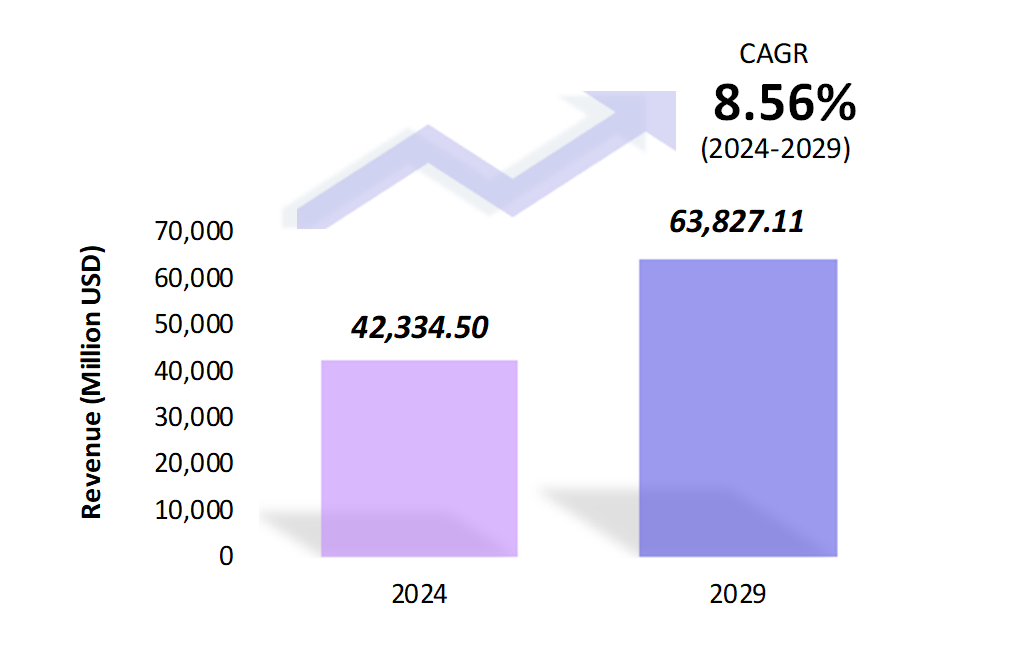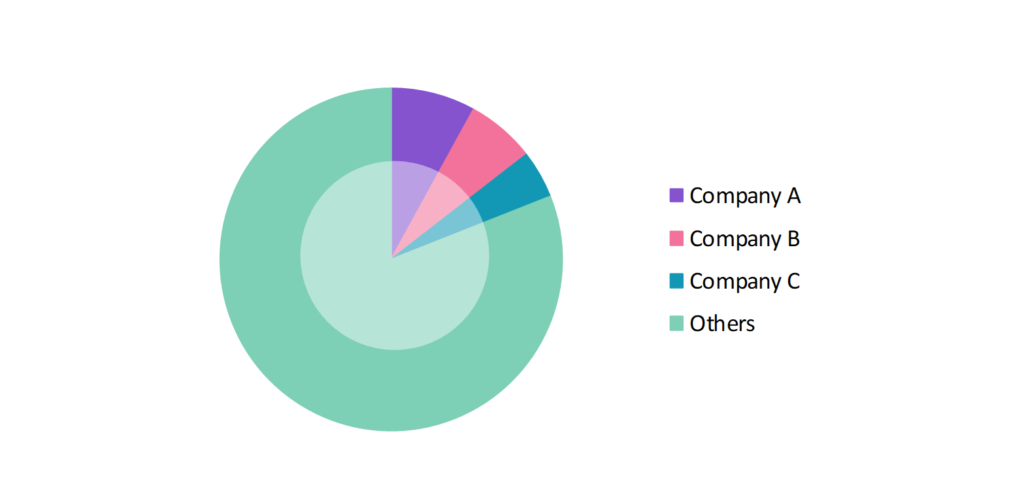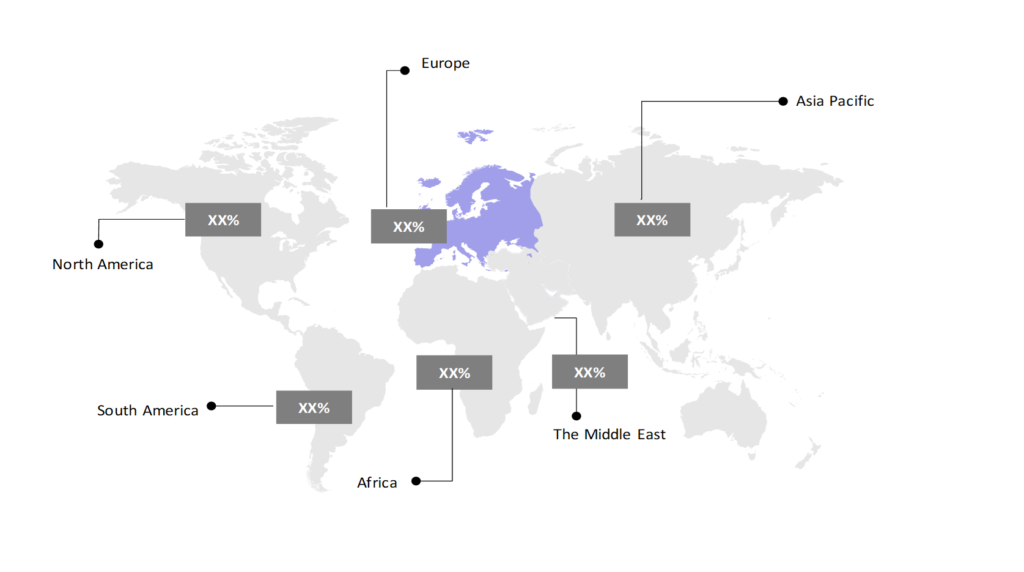Commercial Greenhouse Market Insights: Size, Share, Growth Analysis & Forecast (2024-2029)
The market report provided a comprehensive analysis segmented by Type (Glass Greenhouse, Plastic Greenhouse); by Equipment (Hardware, Software & Services); by Crop Type (Fruits, Vegetables, Flowers & Ornamentals, Nursery Crops, Others); by Geography (North America, South America, Asia Pacific, Europe, the Middle East, Africa).
Outlook

- The commercial greenhouse market is estimated to be at USD 42,334.50 Mn in 2024 and is anticipated to reach USD 63,827.11 Mn in 2029.
- The commercial greenhouse market is registering a CAGR of 8.56% during the forecast period of 2024-2029.
- The global commercial greenhouse market is experiencing significant growth due to increasing demand for year-round agricultural production, advancements in greenhouse technology, and the growing need for sustainable farming practices.
Request a free sample.
Ecosystem

- The global commercial greenhouse industry participants constantly develop strategies to preserve a competitive advantage.
- These companies focus on innovation, quality, and expanding their global footprint. Their strategic initiatives are expected to drive further market growth and shape the future of commercial greenhouse farming.
- Several important entities in the commercial greenhouse market include Berry Global Group, Inc.; Signify N.V.; Heliospectra AB; Plastika Kritis S.A.; Argus Control Systems Ltd.; and others.
Ask for customization.
Findings
| Attributes | Values |
|---|---|
| Historical Period | 2018-2022 |
| Base Year | 2023 |
| Forecast Period | 2024-2029 |
| Market Size (2024) | USD 42,334.50 Mn |
| Market Size (2029) | USD 63,827.11 Mn |
| Growth Rate | 8.56% CAGR from 2024 to 2029 |
| Key Segments | Type (Glass Greenhouse, Plastic Greenhouse); Equipment (Hardware, Software & Services); Crop Type (Fruits, Vegetables, Flowers & Ornamentals, Nursery Crops, Others); Geography (North America, South America, Asia Pacific, Europe, the Middle East, Africa) |
| Key Vendors | Berry Global Group, Inc.; Signify N.V.; Heliospectra AB; Plastika Kritis S.A.; Argus Control Systems Ltd. |
| Key Countries | The US; Canada; Mexico; Brazil; Argentina; Colombia; Chile; China; India; Japan; South Korea; The UK; Germany; Italy; France; Spain; Turkey; UAE; Saudi Arabia; Egypt; South Africa |
| Largest Market | Europe |
Get a free quote.
Trends
- Adoption of Smart Greenhouse Technologies: The trend towards smart agriculture drives the adoption of IoT-enabled greenhouses that allow for real-time monitoring and automated control of environmental conditions. These smart systems enhance precision farming by adjusting temperature, humidity, and irrigation based on sensor data. In 2023, companies like Argus Control introduced advanced smart greenhouse systems, allowing farmers to remotely manage and optimize their operations.
- Integration of Renewable Energy Sources: The adoption of renewable energy sources such as solar, wind, and geothermal power is becoming a significant trend in commercial greenhouse operations. This shift is primarily enhanced by the desire to minimize greenhouse farming’s environmental footprint while reducing energy expenditures.
- Increasing Use of Data Analytics and AI: Data analytics and artificial intelligence (AI) are integral to commercial greenhouse management, enabling predictive maintenance, yield optimization, and resource efficiency. These technologies help farmers make data-driven decisions to maximize productivity and minimize waste.
Speak to analyst.
Catalysts
- Rising Demand for Fresh Produce: The growing consumer preference for fresh, locally sourced produce is a significant driver for the commercial greenhouse market. Greenhouses enable the cultivation of fruits, vegetables, and herbs throughout the year, meeting the increasing demand for fresh produce regardless of seasonal constraints.
- Increasing Adoption of Hydroponics and Vertical Farming: The integration of hydroponic and vertical farming techniques within commercial greenhouses is gaining traction as a solution to maximize space and water efficiency. These methods enable high-density planting and faster crop cycles, making them ideal for urban agriculture.
- Government Support and Subsidies: Governments worldwide are offering subsidies, grants, and incentives to encourage the adoption of commercial greenhouse farming as a means to improve food security and reduce agriculture’s carbon footprint. In 2023, the European Union allocated a significant amount for greenhouse projects to boost sustainable agriculture, supporting the growth of the market in the region.
Inquire before buying.
Restraints
- High Initial Investment Costs: The setup of commercial greenhouses requires substantial capital investment in infrastructure, technology, and equipment, which can be a barrier for small and medium-sized farmers. The high cost of advanced greenhouse systems, such as climate control and automated irrigation, can deter potential adopters.
- Complexity in Managing Greenhouse Environments: Managing the microclimate within a commercial greenhouse, including temperature, humidity, and light levels, can be complex and requires expertise. Failure to maintain optimal conditions can lead to crop loss or reduced yield.
- Regulatory and Compliance Issues: The commercial greenhouse industry is subject to stringent pesticide use, water management, and energy consumption regulations. Navigating these regulations can be challenging, particularly in regions with complex or varying standards. In 2023, several greenhouse operators in the U.K. faced fines for non-compliance with new water usage regulations, highlighting the importance of staying abreast of evolving regulatory requirements.
Personalize this research.
Hotspot

Explore purchase options.
Table of Contents
| 1. Introduction 1.1. Research Methodology 1.2. Scope of the Study 2. Market Overview / Executive Summary 2.1. Global Commercial Greenhouse Market (2018 – 2022) 2.2. Global Commercial Greenhouse Market (2023 – 2029) 3. Market Segmentation 3.1. Global Commercial Greenhouse Market by Type 3.1.1. Glass Greenhouse 3.1.2. Plastic Greenhouse 3.2. Global Commercial Greenhouse Market by Equipment 3.2.1. Hardware 3.2.2. Software & Services 3.3. Global Commercial Greenhouse Market by Crop Type 3.3.1. Fruits 3.3.2. Vegetables 3.3.3. Flowers & Ornamentals 3.3.4. Nursery Crops 3.3.5. Others 4. Regional Segmentation 4.1. North America 4.1.1. The US 4.1.2. Canada 4.1.3. Mexico 4.2. South America 4.2.1. Brazil 4.2.2. Argentina 4.2.3. Colombia 4.2.4. Chile 4.2.5. Rest of South America 4.3. Asia Pacific 4.3.1. China 4.3.2. India 4.3.3. Japan 4.3.4. South Korea 4.3.5. Rest of Asia Pacific 4.4. Europe 4.4.1. The UK 4.4.2. Germany 4.4.3. Italy 4.4.4. France 4.4.5. Spain 4.4.6. Rest of Europe 4.5. The Middle East 4.5.1. Turkey 4.5.2. UAE 4.5.3. Saudi Arabia 4.5.4. Rest of the Middle East 4.6. Africa 4.6.1. Egypt 4.6.2. South Africa 4.6.3. Rest of Africa 5. Value Chain Analysis of the Global Commercial Greenhouse Market 6. Porter Five Forces Analysis 6.1. Threats of New Entrants 6.2. Threats of Substitutes 6.3. Bargaining Power of Buyers 6.4. Bargaining Power of Suppliers 6.5. Competition in the Industry 7. Trends, Drivers and Challenges Analysis 7.1. Market Trends 7.1.1. Market Trend 1 7.1.2. Market Trend 2 7.1.3. Market Trend 3 7.2. Market Drivers 7.2.1. Market Driver 1 7.2.2. Market Driver 2 7.2.3. Market Driver 3 7.3. Market Challenges 7.3.1. Market Challenge 1 7.3.2. Market Challenge 2 7.3.3. Market Challenge 3 8. Opportunities Analysis 8.1. Market Opportunity 1 8.2. Market Opportunity 2 8.3. Market Opportunity 3 9. Competitive Landscape 9.1. Berry Global Group, Inc. 9.2. Signify N.V. 9.3. Heliospectra AB 9.4. Plastika Kritis S.A. 9.5. Argus Control Systems Ltd. 9.6. Company 6 9.7. Company 7 9.8. Company 8 9.9. Company 9 9.10. Company 10 |
Know the research methodology.
Commercial Greenhouse Market – FAQs
1. What is the current size of the commercial greenhouse market?
Ans. In 2024, the commercial greenhouse market size is USD 42,334.50 Mn.
2. Who are the major vendors in the commercial greenhouse market?
Ans. The major vendors in the commercial greenhouse market are Berry Global Group, Inc.; Signify N.V.; Heliospectra AB; Plastika Kritis S.A.; Argus Control Systems Ltd.
3. Which segments are covered under the commercial greenhouse market segments analysis?
Ans. The commercial greenhouse market report offers in-depth insights into Type, Equipment, Crop Type, and Geography.
